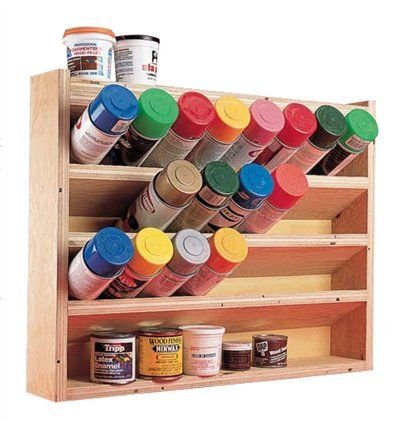Woodworking has long been a beloved hobby for many, but in recent years, a new trend has emerged – 3D woodwork. This innovative technique takes woodworking to the next level by creating stunning pieces that truly stand out. In this article, we will explore what exactly 3D woodwork is and why it is gaining popularity among enthusiasts and professionals alike.
When we think of woodworking, traditional flat designs often come to mind – tables, chairs, and cabinets. However, with the advent of advanced tools and techniques, woodworkers are now able to add depth and dimension to their projects like never before. 3D woodwork involves using various methods to create designs that appear three-dimensional when viewed from different angles.
The increasing popularity of 3D woodwork can be attributed to several factors. Firstly, it offers a unique and eye-catching aesthetic that adds an extra “wow” factor to any piece. Whether it’s intricate carvings or layered patterns, these designs draw attention and captivate viewers. Additionally, 3D woodwork allows artisans to push their creativity further by exploring new possibilities in design and craftsmanship.
In the following sections of this article, we will delve deeper into the world of 3D woodwork. We will discuss the tools and materials needed for this type of woodworking and provide a comprehensive guide on how to understand them. We will also explore tips and tricks for planning your own stunning 3D woodwork projects and offer step-by-step guidance on bringing your ideas from concept to finished product.
If you’ve ever wanted to take your woodworking skills to new heights or simply want a fresh approach to your craft, then 3D woodwork is worth exploring. Join us as we embark on this journey into the world of three-dimensional woodworking, where imagination knows no bounds.
Understanding the Tools and Materials Needed for 3D Woodwork
When it comes to creating 3D woodwork projects, having a good understanding of the tools and materials is essential. This comprehensive guide will walk you through the different types of tools and materials needed for 3D woodwork, helping you create stunning and intricate designs.
Tools
- Table Saw: A table saw is an essential tool for any woodworker. It allows you to accurately cut large pieces of wood to your desired dimensions.
- Jigsaw: A jigsaw is perfect for creating curved or intricate cuts in your wood piece. It gives you more flexibility in design options.
- Chisels: Chisels are necessary for shaping and carving wood. They come in various sizes and shapes, providing versatility for different woodworking tasks.
- Routers: Routers are used to hollow out areas or create decorative edges in your woodwork. They add depth and texture to your projects.
Materials
- Solid Wood: Choose a high-quality solid wood such as oak, cherry, or walnut. These woods are durable and have beautiful grains that enhance the visual appeal of your projects.
- Plywood: Plywood is a versatile material that can be used as a base or substrate for your 3D projects. It provides stability and support while adding structure to your designs.
- Veneer: Veneer is thin slices of high-quality wood that can be glued onto surfaces to add an elegant finish. It allows you to achieve intricate designs without the need for extensive carving or shaping.
- Adhesives: Choose adhesives specifically designed for woodworking, such as wood glue or epoxy. These adhesives ensure a strong bond between the different pieces of wood in your project.
By familiarizing yourself with these essential tools and materials, you will be well-prepared to embark on your journey into 3D woodwork. Understanding how each tool works and which materials are best suited for your project will enable you to bring your ideas to life with precision and finesse.
Planning Your Design
When it comes to creating stunning 3D woodwork projects, careful planning and designing are crucial. This section will provide you with tips and tricks to help you plan your design effectively and create truly impressive pieces.
- Consider the end result: Before diving into the design process, it is essential to have a clear vision of what you want your finished project to look like. Think about the purpose of your piece, whether it is a functional item or a decorative art piece. Understanding the intended use will guide your design choices and ensure that your project fulfills its purpose.
- Sketch and visualize: Start by sketching out your ideas on paper, allowing yourself to explore different concepts and layouts. Having a visual representation of your design can help you identify any potential flaws or areas that need improvement. You can also use digital tools or software specifically designed for woodworking to create virtual models of your project before starting construction.
- Play with proportions: Proportions play a significant role in creating visually appealing 3D woodwork projects. Consider how elements such as height, width, and depth interact with each other to achieve balance and harmony in your design. Experimenting with different proportions can help you find the perfect balance for your project.
- Choose compatible wood species: The choice of wood species can greatly impact the final outcome of your 3D woodwork project. Different woods have unique textures, patterns, colors, and even densities that will affect the overall aesthetic appeal of your piece. Research different wood species and select ones that complement your design concept while considering factors like durability and ease of working with specific woods.
- Incorporate texture and details: Adding texture to your 3D woodwork projects can elevate their visual appeal significantly. Experiment with techniques like carving, fretwork, or inlay work to incorporate intricate details into the surface of your wood piece. This can give your design a sense of depth and dimension that catches the eye.
By following these tips and tricks for planning your design effectively, you will be well on your way to creating stunning 3D woodwork projects that truly stand out. Remember to take your time during the planning phase and don’t be afraid to make adjustments along the way to ensure the final result exceeds your expectations.
Step-by-Step Guide
Creating 3D woodwork projects can be a rewarding and fulfilling experience, allowing you to showcase your creativity and craftsmanship. In this step-by-step guide, we will take you through the process of turning a concept into a finished product.
- Choose Your Design: The first step in creating 3D woodwork is deciding on the design you want to bring to life. Whether it’s a functional item like a coffee table or a decorative piece like a sculpture, selecting a design that inspires you is crucial.
- Gather Your Materials: Once you have chosen your design, it’s time to gather the materials needed for your project. This will typically include wood of various types and sizes, as well as any other tools necessary for cutting, shaping, and joining the wood together.
- Make Precise Measurements: Accurate measurements are essential for creating 3D woodwork projects. Use measuring tools such as rulers, calipers, or tape measures to ensure precise dimensions for each part of your design. Taking the time to measure accurately will help guarantee that your final product fits together seamlessly.
- Cut and Shape the Wood: With your measurements in hand, it’s time to cut and shape the wood according to your design. Depending on the complexity of your project, this may involve using tools such as saws, chisels, or routers to carefully carve out each component.
- Assemble Your Project: Once you have all the pieces cut and shaped correctly, it’s time to assemble them into the final product. This may involve joining them with screws, nails, glue, or even more advanced woodworking techniques such as dovetail joints or mortise-and-tenon joints.
- Sand and Finish: After assembly is complete, use sandpaper or an electric sander to smooth out any rough edges or surfaces. This will not only improve the overall appearance of your project but also make it safe to handle. Once sanded, apply the desired finish, whether it’s paint, stain, or a clear protective coat.
By following these steps, you can transform your concept into a stunning 3D woodwork project. Remember to take your time and enjoy the process, as woodworking is not only a skill but also an art form. Keep practicing and experimenting with different techniques to continue honing your skills and creating beautiful pieces that showcase your creativity.
Exploring Different Techniques for Adding Depth and Texture to Your Woodwork Projects
Woodworking is not only about creating functional pieces but also about incorporating aesthetics and visual interest. Adding depth and texture to your woodwork projects can take them from ordinary to extraordinary. In this section, we will explore different techniques that you can use to enhance the three-dimensional aspect of your creations.
One technique you can employ is carving. Carving involves removing parts of the wood to create depressions or raised areas, adding dimension and texture. There are various types of carving, such as relief carving, which involves creating designs that stand out from a flat surface, and chip carving, where small chips are removed from the wood to form patterns.
Another method for adding depth and texture is through wood burning. Using a heated tool called a pyrography pen, you can create intricate designs by burning the surface of the wood. This technique allows for precise detailing and shading, giving your projects a unique and striking appearance.
Additionally, you can experiment with inlaying different materials into your woodwork. Inlaying involves embedding contrasting materials like metal, stone, or even other types of wood into the surface of your project. This technique adds visual interest and texture by creating a contrast between different materials.
Implementing these techniques requires practice and skill but can elevate your woodworking projects to new heights. By exploring different methods like carving, wood burning, and inlaying, you can add depth and texture that will captivate viewers and make your creations truly stand out.
| Technique | Description |
|---|---|
| Carving | Creating depressions or raised areas by removing parts of the wood. |
| Wood Burning | Burning the surface of the wood using a pyrography pen to create intricate designs. |
| Inlaying | Embedding contrasting materials into the wood surface, such as metal or stone. |
Troubleshooting Common Challenges in 3D Woodwork
As with any craft or artistic endeavor, 3D woodwork can present its own set of challenges and obstacles. However, with the right knowledge and expertise, these challenges can be overcome. In this section, we will explore some common issues that woodworkers may encounter during 3D projects and provide expert tips and solutions to help you troubleshoot and find success in your woodworking ventures.
One common challenge in 3D woodwork is achieving clean cuts on intricate designs. When working with complex patterns or detailed shapes, it can be difficult to ensure that your cuts are precise and accurate. To address this issue, it is essential to have sharp blades on your tools.
Dull blades can cause tear-out or splintering, ruining the aesthetics of your project. Regularly sharpening or replacing blades will result in cleaner cuts. Additionally, using a slower speed setting on power tools allows for better control and reduces the likelihood of mistakes.
Another challenge that woodworkers may face in 3D projects is achieving smooth surfaces on curved edges or intricate details. Sanding can be time-consuming and challenging when dealing with complex shapes. One solution is to invest in sanding accessories specifically designed for curved edges or small details like spindle sanders or detail sanders. These tools can make the sanding process more efficient and effective by ensuring consistent results in hard-to-reach areas.
Additionally, moisture content in wood can cause problems such as warping or splitting once a project is completed. To prevent these issues, it is crucial to store your wood properly before beginning any project and allow it to acclimate to the conditions of your workspace for at least a few days before working with it. Testing the moisture content of your wood using a moisture meter is also recommended to ensure that it falls within an acceptable range for woodworking.
By being aware of these common challenges in 3D woodwork and utilizing the expert tips and solutions provided, you will be better equipped to overcome any obstacles that may arise during your projects. Remember that practice and patience are key in refining your skills, and don’t be discouraged by setbacks. With determination and the right techniques, you can create stunning 3D woodwork pieces that showcase your creativity and talent.
Showcasing Inspirational 3D Woodwork Creations for Further Motivation
Introduction
The world of 3D woodwork is filled with endless possibilities and opportunities for creativity. One of the best ways to enhance your skills and gather inspiration is by exploring the work of other talented woodworkers. In this section, we will showcase some incredible 3D woodwork creations that will inspire and motivate you to push the boundaries of your own craftsmanship.
The Beauty of Nature: Sculptural Woodwork
Sculptural woodwork is a fascinating technique that involves creating intricate designs inspired by the natural world. From lifelike animals to detailed tree branches, sculptural woodwork brings organic elements into breathtaking three-dimensional forms. One such example is the work of artist John Carroll, who carves intricate birds and animals that seem to come alive in his pieces. By studying his techniques and attention to detail, you can gain insight into how to create your own stunning sculptural woodwork.
Playing with Perspective: Trompe-l’oeil Woodwork
Trompe-l’oeil, which means “deceive the eye” in French, is a technique that creates an optical illusion of three-dimensionality on a two-dimensional surface. When applied to woodwork, this artistic approach allows for mind-boggling perspectives that trick our perception.
A master of trompe-l’oeil woodwork, Peter Demetz’s sculptures are so realistic that they often leave viewers questioning whether they’re made of wood or not. Exploring Demetz’s work can provide valuable insights into how to manipulate perspective and achieve depth in your own 3D woodwork projects.
Merging Wood with Other Mediums: Mixed Media Woodwork
Innovative artists have been pushing the boundaries of traditional woodworking by incorporating other materials into their creations. Mixed media woodwork combines different mediums like metal, glass, or even textiles with wood to create dynamic and visually striking pieces. Artist Michael C. Thorpe, for example, incorporates metal into his wooden sculptures to create stunning contrasts and unexpected combinations. Exploring the work of mixed media woodworkers can inspire you to experiment with different materials and push the limits of your own creativity.
By immersing yourself in the awe-inspiring work of other 3D woodworkers, you can gain invaluable insights, discover new techniques, and find inspiration for your own projects. Remember, creativity knows no bounds, so let these showcased creations motivate you to reach new heights in your woodworking journey.
Safety First
Understanding the Risks in 3D Woodwork
Before diving into the world of 3D woodwork, it’s important to understand the potential risks involved and take necessary safety measures. Woodworking can be hazardous if proper precautions are not taken, so it is crucial to prioritize safety throughout the entire process. Understanding these risks will help you create a safe and secure environment for your woodworking projects.
Personal Protective Equipment (PPE)
One of the first steps in ensuring safety during 3D woodwork is acquiring and wearing appropriate personal protective equipment (PPE). PPE protects you from potential injuries and helps minimize the impact of accidents. Here are some essential PPE items to consider:
- Eye Protection: Safety glasses or goggles should be worn at all times to protect your eyes from flying debris, sawdust, and other harmful particles.
- Hearing Protection: The power tools used in woodworking can generate loud noises, which can damage your hearing over time. Utilize earmuffs or earplugs to protect yourself from excessive noise.
- Respiratory Protection: Wood dust can have detrimental effects on your respiratory system, leading to short-term irritation or long-term health issues. Wear a properly-fitted dust mask or respirator to prevent inhaling fine particles.
- Hand Protection: Consider wearing gloves when handling sharp tools or working with chemicals. However, avoid loose-fitting gloves that could get caught in machinery.
- Clothing: Avoid loose clothing that may get entangled with power tools and opt for fitted attire instead. Additionally, wear closed-toe shoes with non-slip soles for added protection against falling objects or slippery surfaces.
Maintaining a Safe Work Environment
In addition to personal protective equipment, creating a safe work environment plays a vital role in preventing accidents and injuries during 3D woodwork. Here are some key considerations to ensure a safe workspace:
- Adequate Lighting: Ensure your workspace is well-lit to minimize potential hazards and maintain clear visibility while working.
- Ventilation: Proper ventilation is crucial, as it helps remove harmful dust particles and fumes generated during the woodworking process. Open windows or use exhaust systems to improve air circulation in your workspace.
- Organized Workspace: Keep your work area clean and organized, ensuring tools, materials, and cords are properly stored away when not in use. A clutter-free environment helps prevent potential tripping hazards.
- Power Tool Safety: Familiarize yourself with the safety features of each power tool before usage, such as blade guards and emergency stop buttons. Follow manufacturer instructions for maintenance and always unplug tools when not in use.
By following these essential safety measures and precautions in 3D woodwork, you can create a secure environment for your projects and enjoy the process while minimizing any potential risks or accidents. Remember, safety should always be a priority when pursuing any form of woodworking.
Taking Your 3D Woodwork Skills to the Next Level
Advancing your skills in 3D woodwork opens up a world of possibilities for creating intricate and sophisticated projects. Once you have mastered the basics, it’s time to push your creativity and craftsmanship further by exploring advanced techniques and taking on more challenging projects. In this section, we will discuss some of these techniques and projects that can help you elevate your 3D woodwork skills to the next level.
One technique that takes 3D woodwork to new heights is the process of laminating different species of wood together to create complex patterns and designs. By carefully selecting contrasting colors, grains, or textures, you can achieve stunning visual effects in your woodworking projects. This technique is commonly used in creating decorative elements such as veneers or inlay work. It requires precision and patience, as well as knowledge of different types of adhesive.
Another advanced technique worth exploring is the art of carving three-dimensional designs directly into the wood surface. Unlike relief carving where the design is raised from a flat background, this technique delves deeper into the wood to create depth and realism. It requires specialized tools such as gouges, chisels, and mallets, as well as a steady hand. With practice and attention to detail, you can create intricate designs that bring your woodwork projects to life.
When it comes to advanced projects in 3D woodwork, furniture making often takes center stage. Building complex furniture pieces such as chairs or tables not only require expert joinery skills but also an understanding of ergonomics and design principles. Upholstery work may be involved as well for added comfort and aesthetic appeal. Other ambitious projects may include architectural features like staircases or ornate door frames that showcase intricate detailing.
By gradually incorporating advanced techniques into your woodworking repertoire and challenging yourself with more complex projects, you will continue to refine your skills while expanding your creative horizons. Remember to always approach these advanced techniques with caution and seek guidance or mentorship if necessary. With dedication and practice, you’ll be able to create impressive 3D woodwork projects that truly showcase your expertise and passion for the craft.
Conclusion
In conclusion, 3D woodwork is a fascinating and innovative art form that is gaining popularity among woodworking enthusiasts. With the right tools, materials, and techniques, you can create stunning 3D woodwork projects that showcase depth, texture, and creativity. By planning your design carefully and following a step-by-step guide, you can bring your concepts to life and create finished products that are truly unique.
Exploring different techniques for adding depth and texture to your woodwork projects allows you to create pieces that are visually appealing and captivating. Whether it’s through carving, inlay work, or using contrasting wood types, these techniques can elevate your projects to new heights. Additionally, having an understanding of common challenges in 3D woodwork and knowing how to troubleshoot them can help ensure a smooth creative process.
To further motivate yourself and gather inspiration, it’s beneficial to look at showcases of inspirational 3D woodwork creations. These examples can ignite your creativity and provide ideas for future projects. It’s important not only to learn from others but also to experiment with different methods and push the boundaries of what is possible in the world of 3D woodwork.
Safety should always be a top priority when engaging in 3D woodwork. By following essential safety measures and precautions such as wearing protective gear and working in a well-ventilated area, you can ensure that your woodworking experience remains enjoyable and injury-free.
Finally, as you gain more experience and confidence in 3D woodworking, don’t hesitate to take your skills to the next level by exploring advanced techniques and projects. Pushing yourself out of your comfort zone will allow you to continuously grow as an artist.
Embrace the world of 3D woodwork today – unleash your creativity, hone your skills, and create beautiful works of art that will leave others in awe. The possibilities are endless when it comes to this captivating field of craftsmanship.
Frequently Asked Questions
What design software do woodworkers use?
Woodworkers commonly use design software like SketchUp, Autodesk AutoCAD, and SolidWorks. These programs provide tools and features specifically tailored for woodworking projects, allowing woodworkers to create detailed and precise 3D models of their designs. Design software plays a crucial role in the modern woodworking industry by helping woodworkers visualize and plan their projects before actually starting the construction process.
Is SketchUp for woodworking free?
Yes, SketchUp offers a free version that woodworkers can use for their woodworking projects. Called “SketchUp Free,” this version provides basic functionality and is suitable for beginners or hobbyist woodworkers who want to explore the software’s capabilities without making an upfront investment.
However, SketchUp also offers more advanced versions like SketchUp Pro with additional features and functionalities for professional users who require more robust tools for their woodworking design needs.
Do carpenters use CAD?
While carpenters may not always use Computer-Aided Design (CAD) software extensively compared to other professionals in the architecture or engineering fields, it is becoming increasingly common for them to utilize CAD tools in certain aspects of their work. With CAD programs like Autodesk AutoCAD or Vectorworks, carpenters can create accurate drawings and 3D models of structures, cabinetry, furniture, or other custom woodwork they intend to build.
This allows them to better communicate design ideas with clients or collaborators, accurately estimate material requirements, and streamline the overall construction process by eliminating potential errors or misunderstandings during project planning stages.

Hi everyone! I’m a woodworker and blogger, and this is my woodworking blog. In my blog, I share tips and tricks for woodworkers of all skill levels, as well as project ideas that you can try yourself.





